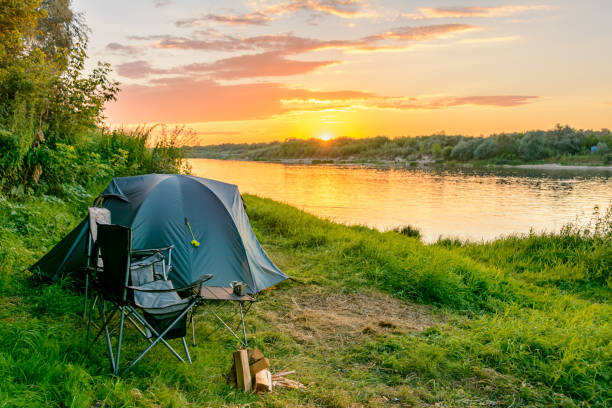
The best way to help your child get acquainted with camping is to have a campout that isn't too far away. In other words, have the campout in your own backyard. This allows the family to have the experience of camping out without leaving the security of the house. Being in your own backyard has the advantage of canceling the campout if the weather turns bad.
You may also decide to ease into camping by having a series of campouts in the backyard. For each additional camping adventure, you can add on a responsibility. For instance, the first trip might include setting up the tent and sleeping out. For smaller children, they will be able to focus on setting up the tent properly. The next trip might include building a fire to cook a snack. Your child will be able to focus on building and maintaining a camp fire safely.
Another trip could focus mainly on planning and preparing food. I know that most children think that camp food consists of hot dogs and s'mores, but they can quickly learn that there are a variety of healthy, tasty meals that are easy to prepare over a fire.
Other camping trips can help children learn how to use different types of camping equipment. Even though each of these outings has a main focus, your child will also be practicing some of the things that are fundamental to camping. For instance, every time, your child will experience a night outdoors in a sleeping bag. This will help him to gain experience and confidence for camping away from your home.
Other activities that you can enjoy with your child on these regular camping trips in your backyard are searching the sky for constellations, listening to the different night sounds, and enjoying special nighttime snacks.
If you are worried that your child isn't ready for camping in the backyard or you would like more activities to prepare your child for a camping trip, here are some additional suggestions to get him familiar with the outdoors to eliminate his fears.
You can take your child (even a group of children) on a small hike in the woods at a local park. While there, you can teach your child about safety and how to respect nature. You may also be able to teach him some outdoor skills and outdoor ethics.
You may decide to take your child to a nature center. This would allow him to experience nature a bit more than just the local park. You could also go fishing at a local pond or stream. Most children love to learn how to fish. Even having a picnic is an excellent way to experience the outdoors.
On days that you don't have the time to plan a full day of activity, you could easily go on an evening walk or a flashlight walk. Your child will be able to experience more of nature in the evenings and at night because the hustle of the day dies down and you will be able to hear nature better.
Don't forget that simply reading a book about camping will also help your child to become familiar with camping which will help to lessen his fear.
Happy Camping!




